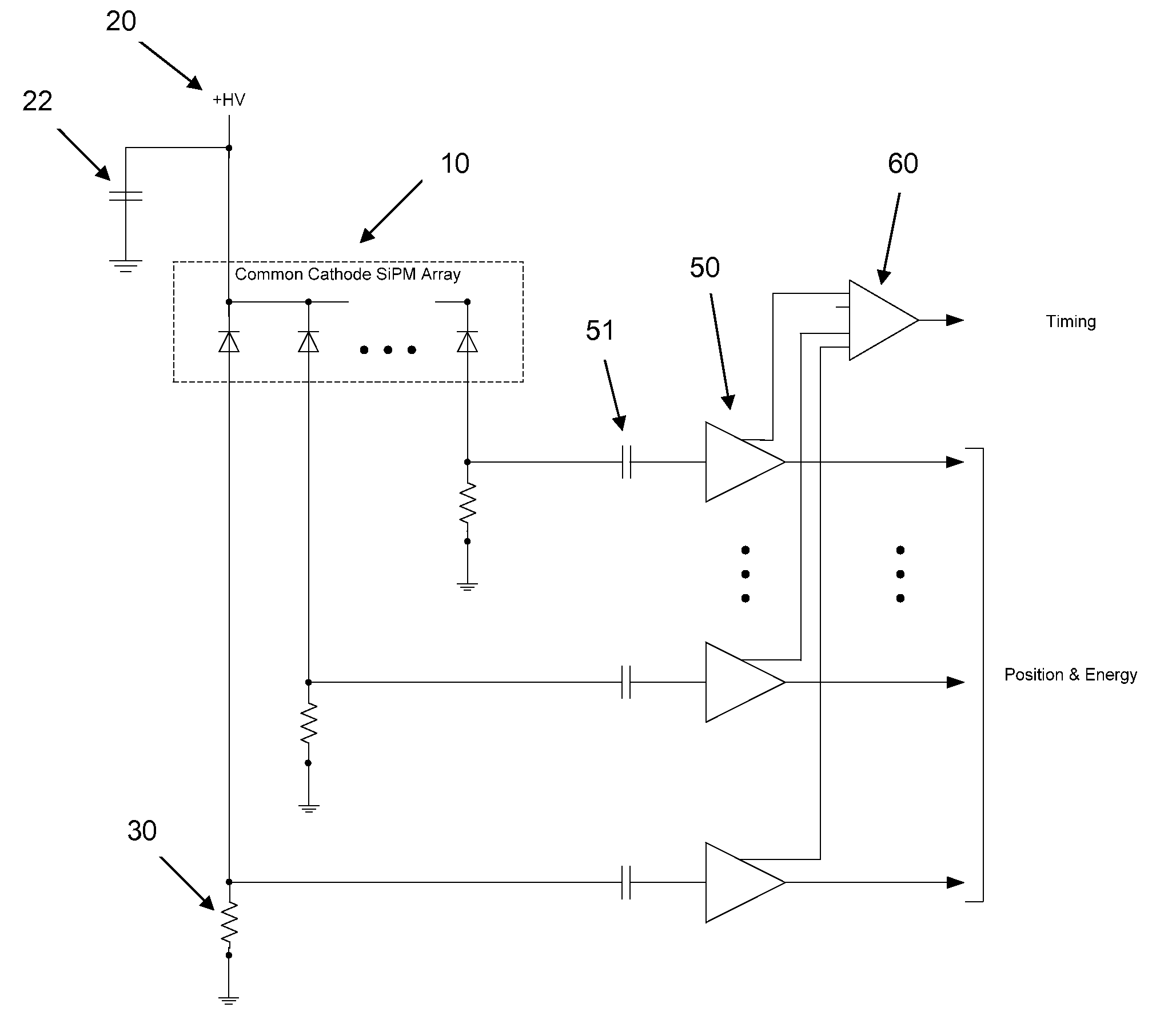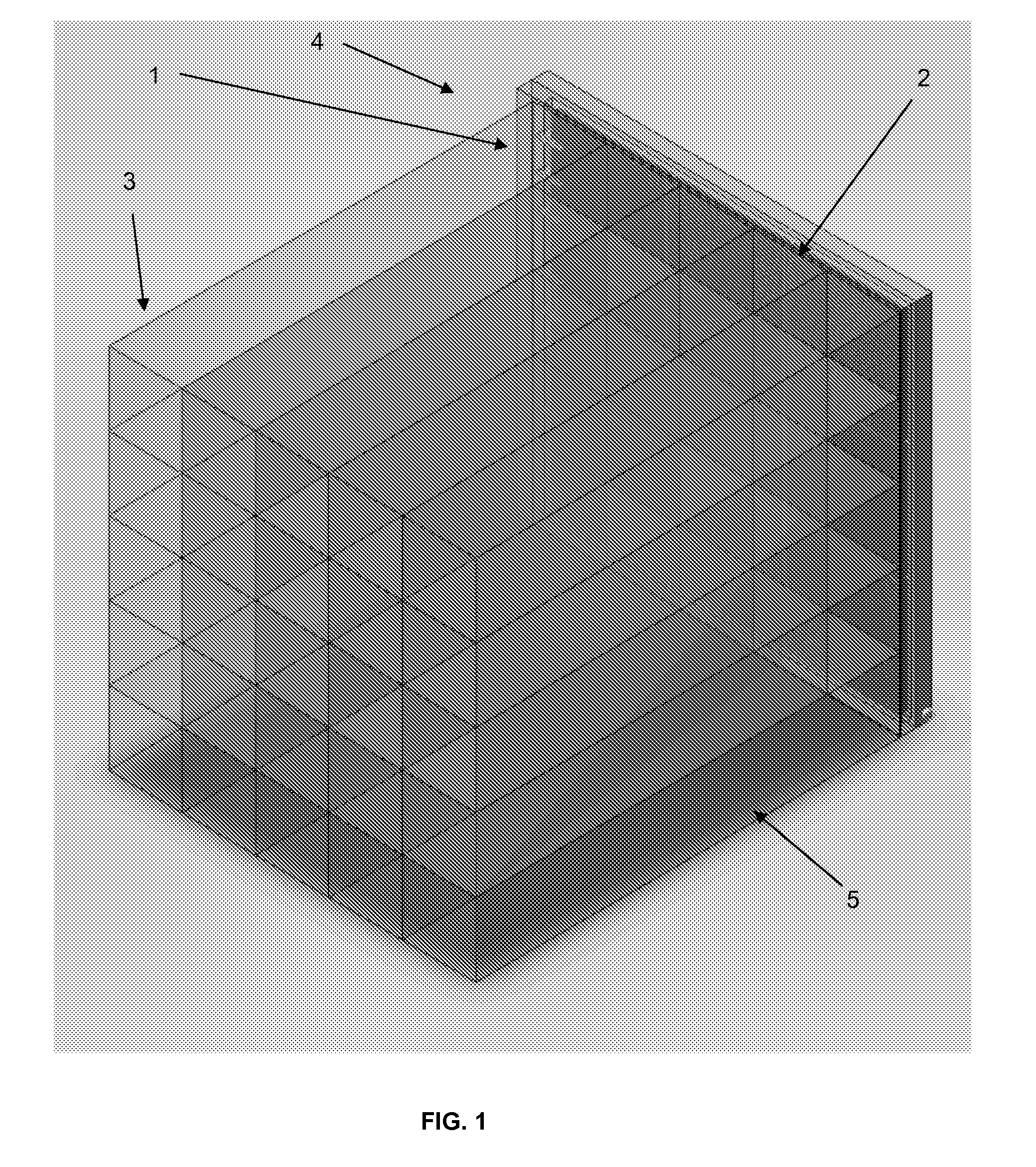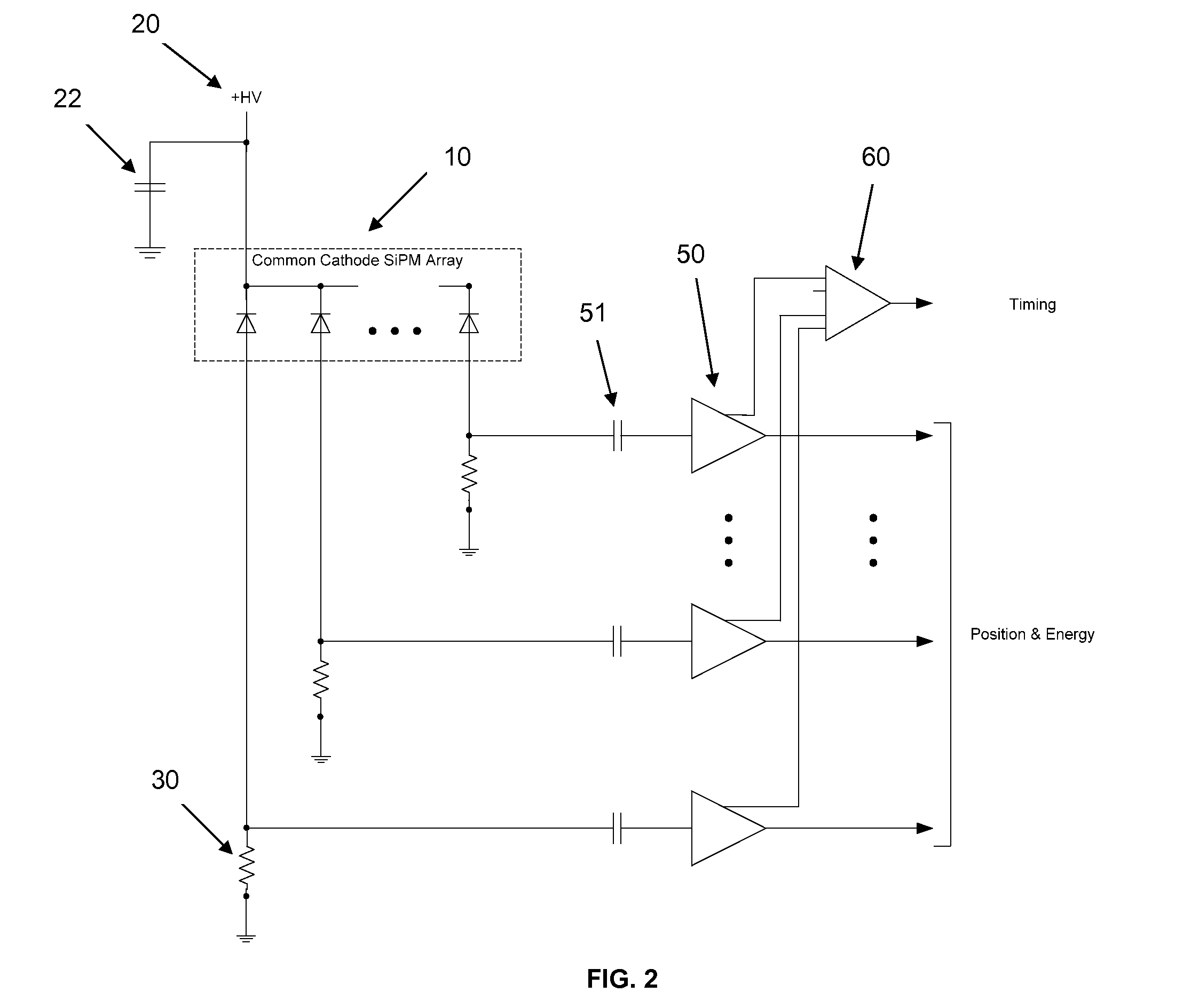Silicon Photomultiplier Based TOF-PET Detector
a photomultiplier and detector technology, applied in the field of nuclear medical imaging, can solve the problems of inability to accurately detect the total pet system performance, the timing resolution loss of these events is inevitable, and the complexity and high electronic density and power add to the complexity. , to achieve the effect of reducing the complexity and power requirements of the electronic circuit, easing the necessary fabrication methods, and recovering detection efficiency
- Summary
- Abstract
- Description
- Claims
- Application Information
AI Technical Summary
Benefits of technology
Problems solved by technology
Method used
Image
Examples
Embodiment Construction
[0052]The present invention may be understood more readily by reference to the following detailed description of preferred embodiments of the invention as well as to the examples included therein. All numeric values are herein assumed to be modified by the term “about,” whether or not explicitly indicated. The term “about” generally refers to a range of numbers that one of skill in the art would consider equivalent to the recited value (i.e., having the same function or result). In many instances, the term “about” may include numbers that are rounded to the nearest significant figure.
[0053]The miniblock detector described here comprises an array of silicon photomultipliers (SiPMs), which may be monolithic, discrete or multiple monolithic devices in a package, optically coupled to a block of scintillator pixels without inter-pixel reflectors (“air coupled”), or with few inter-pixel reflectors, and surrounded by a thin efficient optical reflector. Air coupling between scintillator pix...
PUM
 Login to View More
Login to View More Abstract
Description
Claims
Application Information
 Login to View More
Login to View More - R&D
- Intellectual Property
- Life Sciences
- Materials
- Tech Scout
- Unparalleled Data Quality
- Higher Quality Content
- 60% Fewer Hallucinations
Browse by: Latest US Patents, China's latest patents, Technical Efficacy Thesaurus, Application Domain, Technology Topic, Popular Technical Reports.
© 2025 PatSnap. All rights reserved.Legal|Privacy policy|Modern Slavery Act Transparency Statement|Sitemap|About US| Contact US: help@patsnap.com



